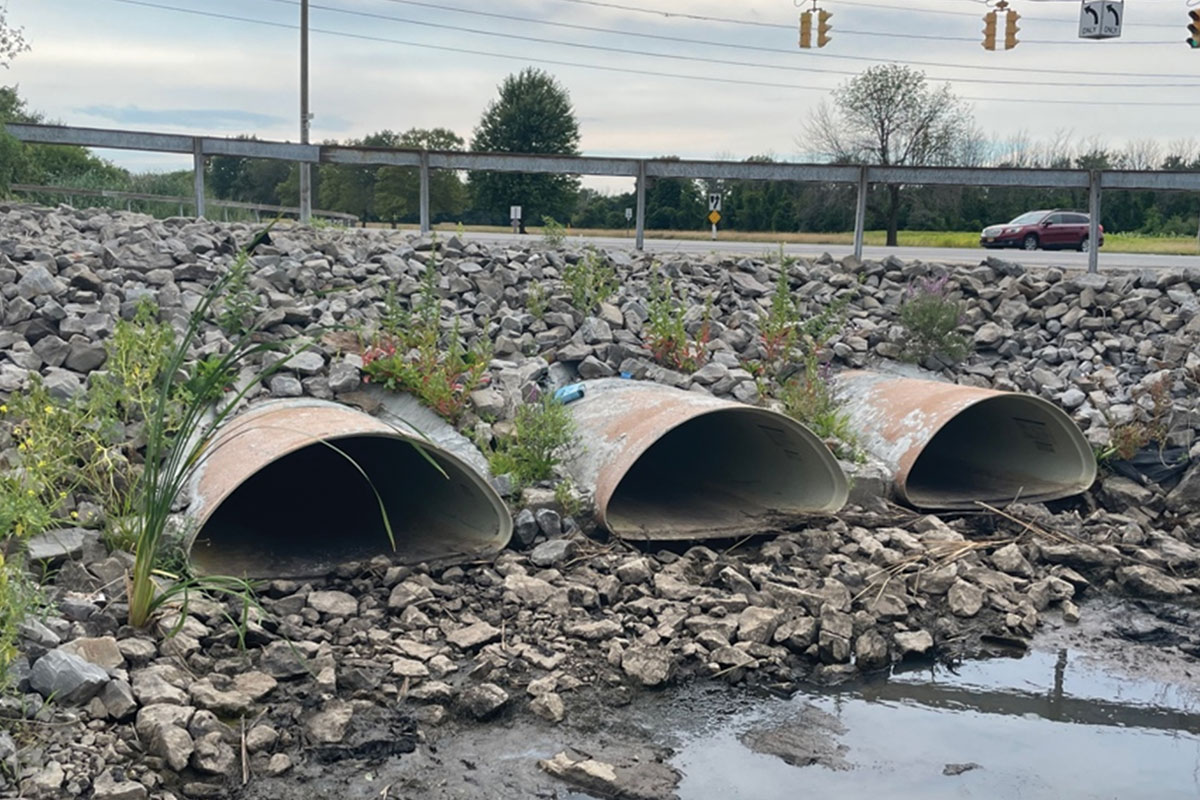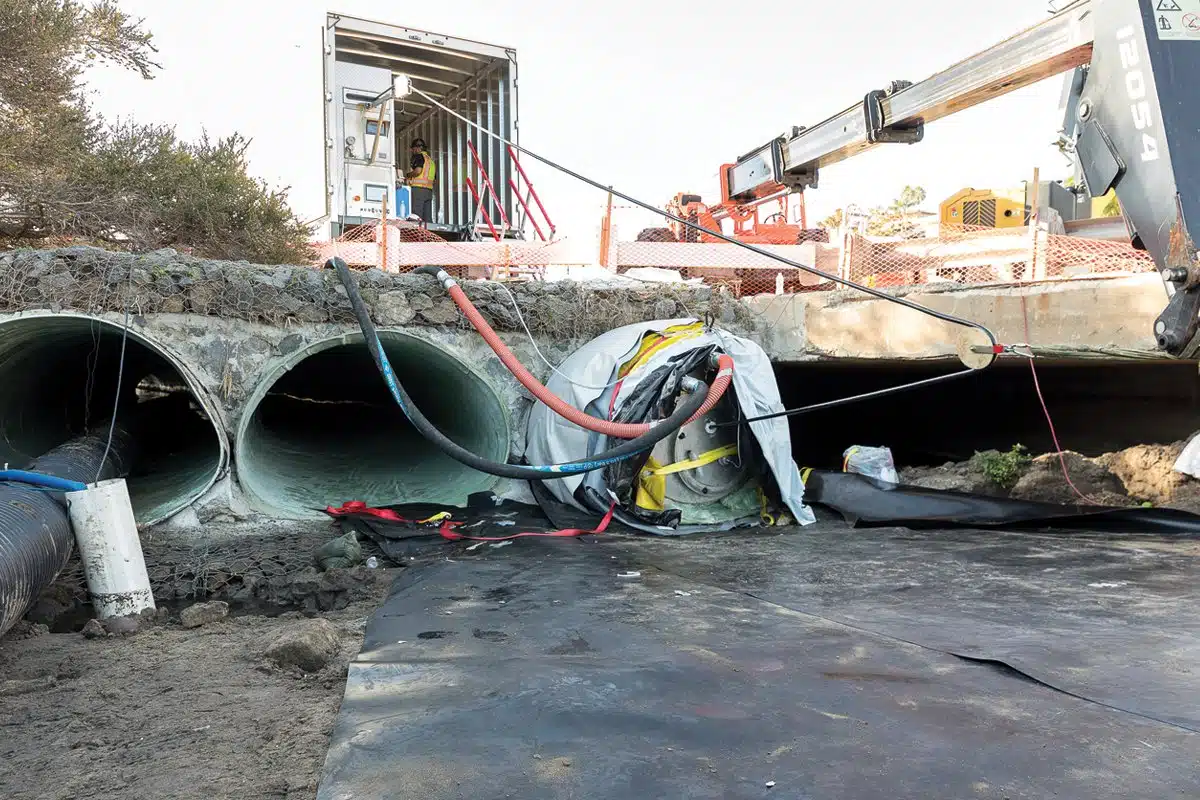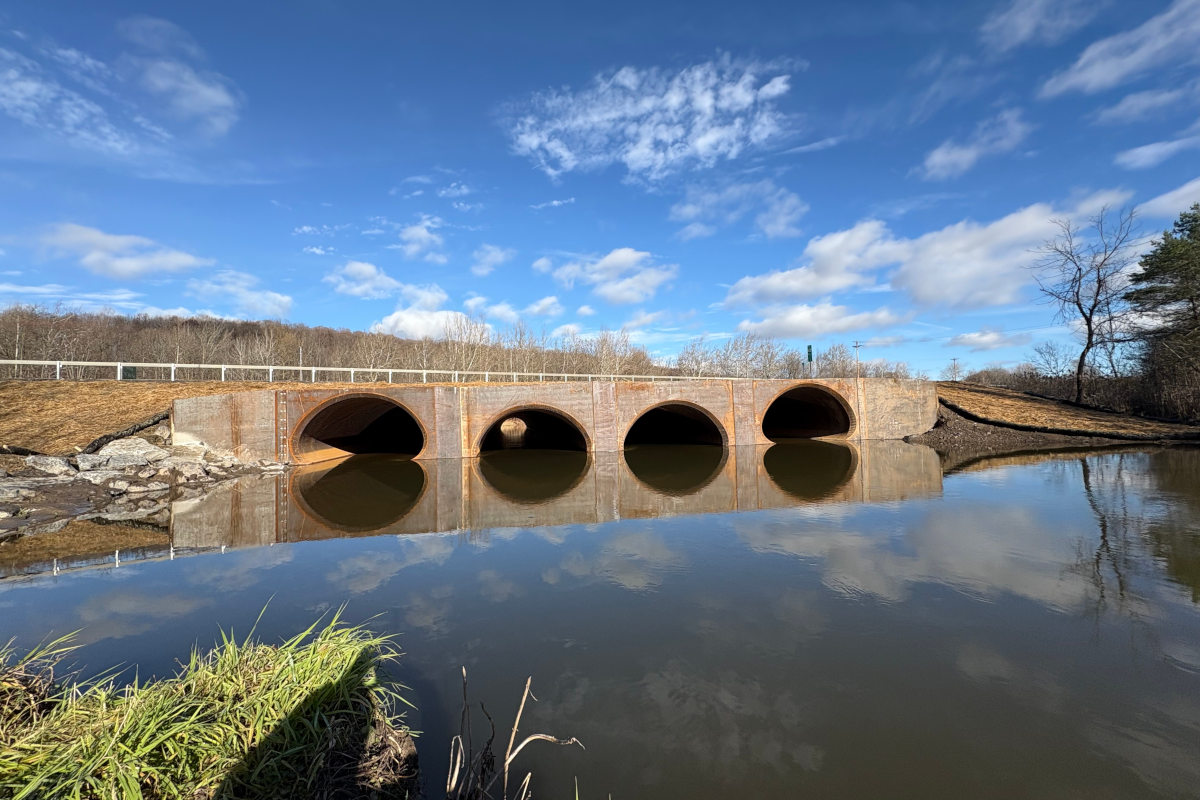
Santa Cruz Culvert Rehabilitation from the Outside and Inside
Balancing budgets is something we all have to go through. Sometimes the old washer might be ready to kick the bucket or the old roof is developing some leaks, but replacement costs are too high in comparison to waiting ‘just a little bit longer” and prioritizing other expenses becomes more important.
We all go through this, either personally or professionally, and the balancing act either goes as planned, or emergencies make your decisions for you.
The County of Santa Cruz California was experiencing a common issue, degraded stormwater conveyance infrastructure that was in need of rehabilitation.
he County, like most other governments across the United States, continually evaluates the health of its infrastructure assets and develops maintenance plans based on repair prioritization.
RELATED: Emergency Culvert Reline and Repair in San Diego
In early 2019, the County evaluated a couple of culverts that were beginning to be a cause for concern. One of the culverts, the Capitola Rd. culvert, a 66-in. diameter, 55-ft long Corrugated Metal Pipe (CMP) was showing severe deterioration in the invert that was leading to settlement, joint separation, structural damage and voids caused by inflow and infiltration (I&I).
While the deterioration was considered high, the County felt it had some time to design a suitable repair that balanced longevity and budget.

After attending a webinar in June 2019, the County began evaluating the potential for relining these culverts using a cementitious lining application called CentriPipe from AP/M Permaform. A few days before its site visit with the CentriPipe manufacturer representative Donald Sims, Santa Cruz noticed the culvert had deteriorated higher than expected, settling up to 13 in. in places.
RELATED: CCCP Only Viable Solution for Urgent Culvert Rehabilitation
“The soil subsidence was pretty severe,” stated Sims. “We later measured with a laser tape and determined it to be about 20 ft across and reaching up nearly 20 ft toward the surface.”
A second area that required help was an 84-in., 163-ft long CMP culvert that ran underneath the intersection of Sumner Road and Dolphin Drive in the City of Aptos. While not as deteriorated as the Capitola Rd. section, the pipe envelope was experiencing water infiltration and soil subsidence which ultimately led to a sinkhole effect and considerable settlement of the above roadway.
Sims continued, “In order for the pipe to be relined, the support soils would need to be stabilized and the voids filled, luckily we had a solution for the County.”
Sims recommended the County look at a geotechnical polyurethane injection application to fill the voids and re-establish contact of the culvert with the support soils and, in the case of the Capitola Road culvert, the above roadway, sidewalk, and parking lane. The company he suggested was EagleLIFT Inc., a foundation and soil repair company based in Ontario, Canada.
After evaluating the severity of the settlement, voids, and soil loss caused by the infiltration, the County decided to pursue Sim’s recommendations and executed the project under an emergency contract.
In both culverts, the initial approach was to stabilize the invert using a special high-density mortar. The mortar was similar to a flowable fill, and when hardened it would provide a stable base for the cementitious liner.
After the invert was stabilized EagleLIFT injected its proprietary two-part, hydro-insensitive EL003 polyurethane through the culvert and into the void area. The EL003 is designed to have optimal spread and reactivity time, making it ideal as a combined void-filling and soil-stabilization product.
RELATED: Culverts Need Trenchless Attention
Once injected, the polyurethane initially spreads in a liquid form and progressively expands throughout the void area and adjacent soils to create a highly dense soil polymer matrix. To optimize the spread and reach, EagleLIFT injected the EL003 at the 4, 8, and 12 o’clock positions at every 4 ft. These injection points allowed for maximum travel time for the polyurethane, allowing it to expand around the culvert and into the voids.

“Polyurethane is a highly adaptable product for mitigating I&I, void filling and joint-sealing. When the culvert, lateral line, or pipe is in good structural condition then it is possible to rehabilitate the pipe with this application alone,” said EagleLIFT COO Cliff Frazao.
“But in the case of the County of Santa Cruz culverts, the extent of the deterioration and settlement was so far along that both the outside of the culvert was stabilized and the inside had to be renewed using the CentriPipe system,” he continued.
After EagleLIFT stabilized the outside of the culvert, AP/M Permaform began relining the pipe with the CentriPipe Cementitious lining system. The CentriPipe system centrifugally casts an 8,000 psi cement mortar as it is pulled through the pipe. The mortar is applied in 1/2-in. layers to ensure the mortar sets effectively.
In the case of CMP, there is an initial pass that is meant to fill the groove area and create an even layer along the pipe. After this, AP/M Permaform took three additional passes to create essentially a 1-1/2-in. cement pipe within the culvert.
“You essentially get a new concrete pipe within the old one,” stated Sims, “a pipe that has minimally reduced flow rates and increased hydraulic efficiency due to its smooth surface.”
The project was performed under emergency contract and required all access to be made via manhole access. The project was completed in two weeks and the county benefited by having two culverts that were stabilized and renewed with two trenchless solutions. The repair was just in time, as almost immediately after the project was completed the County experienced substantial rainfall which could have been disastrous to both culverts.




